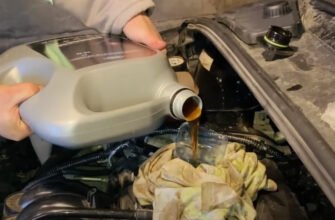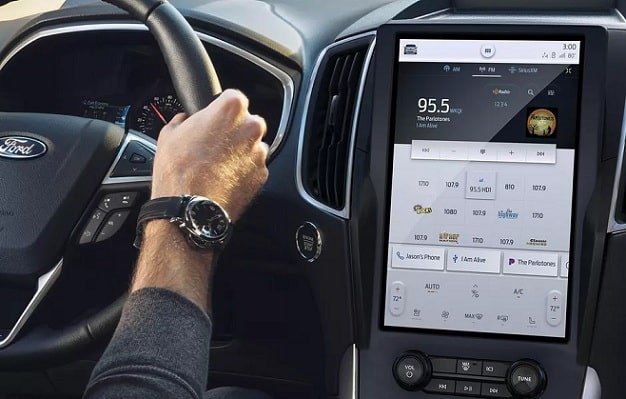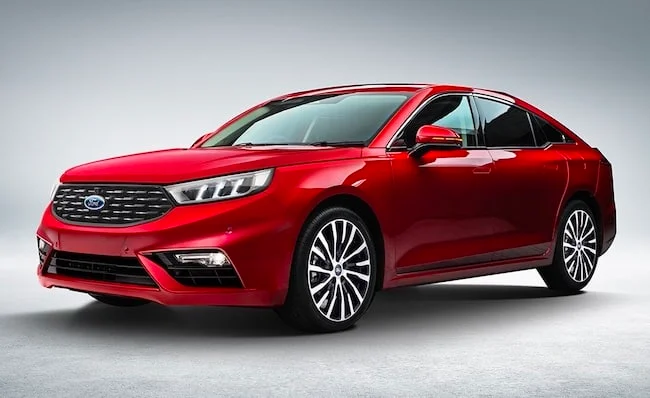Ford Escape SUV and cruise control problems are not a new thing. In fact, they are quite common depending on the model you’re using. Ford Escape SUVs manufactured between 2002 and 2004 and equipped with the 3.0-liter V6 engine will experience cruise control problems the most.
If you’re using any newer model and you’re experiencing something similar, you won’t have to worry. There are several easy fixes to cruise control problems that won’t cost extra on your part. We will cover all the possible reasons why your cruise control is faulty and the necessary fixes.

- Common Reasons Why Ford Escape’s Cruise Control Doesn’t Work
- Blown fuse
- Faulty brake pedal switch
- Damaged speed sensor
- Damaged mechanical components
- Ford Escape Cruise Control Not Working: How to Fix
- Diagnose the problem
- Change the fuse
- Fix the brake pedal switch
- Check the speed sensor
- Fix the mechanical components
- Wrap-up
Common Reasons Why Ford Escape’s Cruise Control Doesn’t Work
Blown fuse
Like every other electronically-controlled system in your car, the cruise control has an associated fuse that is designed to protect the system from damages due to over-current. When this happens, the fuse will blow or fail in order to protect other wiring and save you extra costs in repairs.
This is the easiest thing to solve when it comes to a failed cruise control system. While you can easily replace the fuse, you might notice that your cruise control works for a time and then stops working again. It could be that the fuse has blown again. In such cases, you would have to check the car for other electrical problems and fix them to get the cruise control system back online.
Faulty brake pedal switch
When you step on your brake pedal, you will notice that the brake lights turn on. This is because the cruise control system is designed to disengage whenever you press the brake pedal. This action is overseen by a brake pedal switch which the cruise control is wired to.
If the brake pedal switch is faulty, the cruise control system will stop working and in addition, you will notice several issues with your brake light. Since the cruise control system is programmed to turn off when your car’s brake pedal is pressed, a faulty brake pedal switch may stay in pressed position sending a signal that your brakes are engaged thereby shutting off the feature completely.
Damaged speed sensor
While the name speed sensor sounds pretty obvious that it senses speed, it actually performs more functions than just that. A speed sensor is meant to indicate the speed of the vehicle which will then control the hand on the speedometer. It will also regulate the flow of fuel, ignition timing, and operating the cruise control system.
A failing or damaged speed sensor would cause the cruise control to stop working. However, this problem is very easy to note. If the speed sensor fails, so does the speedometer so you won’t be able to tell how fast you’re going when driving.
Damaged mechanical components
If you own an older Ford Escape SUV, there may be a chance that the cruise control system is controlled via a mechanical system. Unlike electrical systems, this is pretty simple. It features a vacuum actuator and a cable that connects to the actuator. If the vacuum actuator is leaking or the cable linking the actuator to the throttle is damaged, the cruise control will not work.
Ford Escape Cruise Control Not Working: How to Fix
You can always make the fixes on your own but if you’re not a techie person and you can’t easily grasp technical information, you’re better off handing it over a professional. With cruise control problems, there is a high chance that you would have to change one or two things to get it working.
Diagnose the problem
There are a bunch of things that could go wrong with your cruise control system and cause it to fail. The best way to pinpoint the actual problem is to connect your Ford Escape’s ECU through a code reader/scanner. This allows you to read your vehicle error codes and better diagnose what component had developed a fault.
Change the fuse
If you can determine that the problem is due to a bad fuse, you should check the said fuse to see it has blown. A blown fuse would have to be removed and replaced with a fuse rated for the correct amperage.
Fix the brake pedal switch
If the brake pedal switch is the main problem with the cruise control, then you need to check for any superficial damage and correct it. You should also check the wiring connected to the switch. If it is damaged, then you need to change it. With the switch replaced, you should confirm that both the brake lights and cruise control system are working properly.
Check the speed sensor
This fix would require more effort on your part. To check the speed sensor, you will have to get underneath the vehicle. When there, examine the sensor and the surrounding wires for damage. If you notice any damage, you will have to replace the sensor. Also, check the wires connecting the sensor to the speedometer and cruise control switches and ensure that they are not frayed.
Fix the mechanical components
If you’re using an older model car, you would have to put in a bit more work to get things fixed. If the other fixes didn’t work or you didn’t notice any signs of damage in the other parts, then you would have to check the vacuum actuator, hoses, and cables. Open the hood and locate the actuator. Check the hoses and cable to ensure they are in good working condition. If the actuator itself is damaged, then you would have to replace the actuator.
Wrap-up
Once you’re done with any fix, you should test drive the vehicle to ensure that the cruise control is functioning properly. Also, use the code reader/scanner to clear any trouble codes that were produced due to the failed cruise control system.
If you lack the necessary tools to perform any fix or you’re not that much of a techie person, getting a mechanic to handle this problem would be the best way to go about it.







